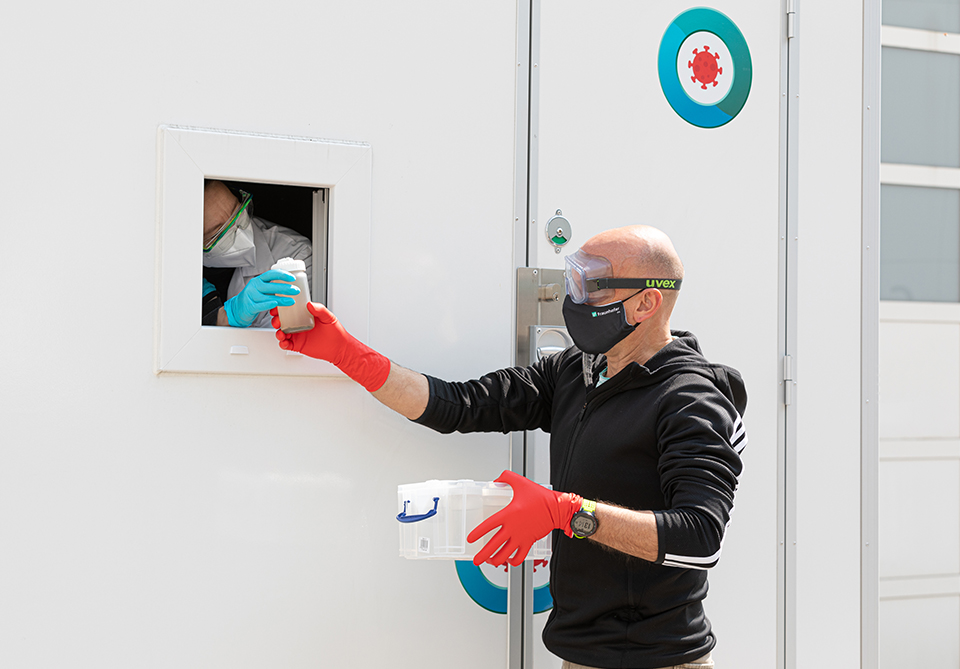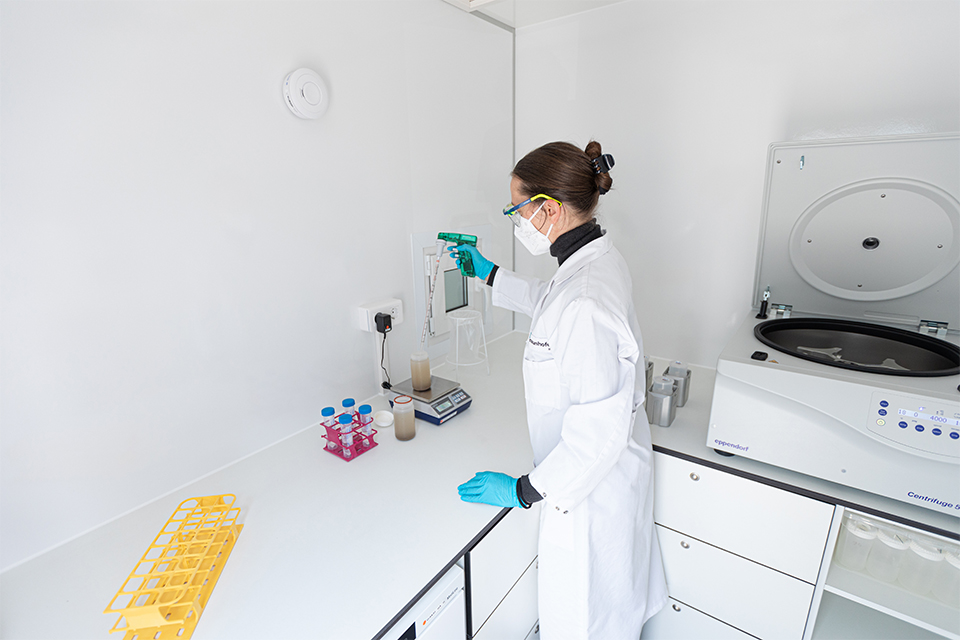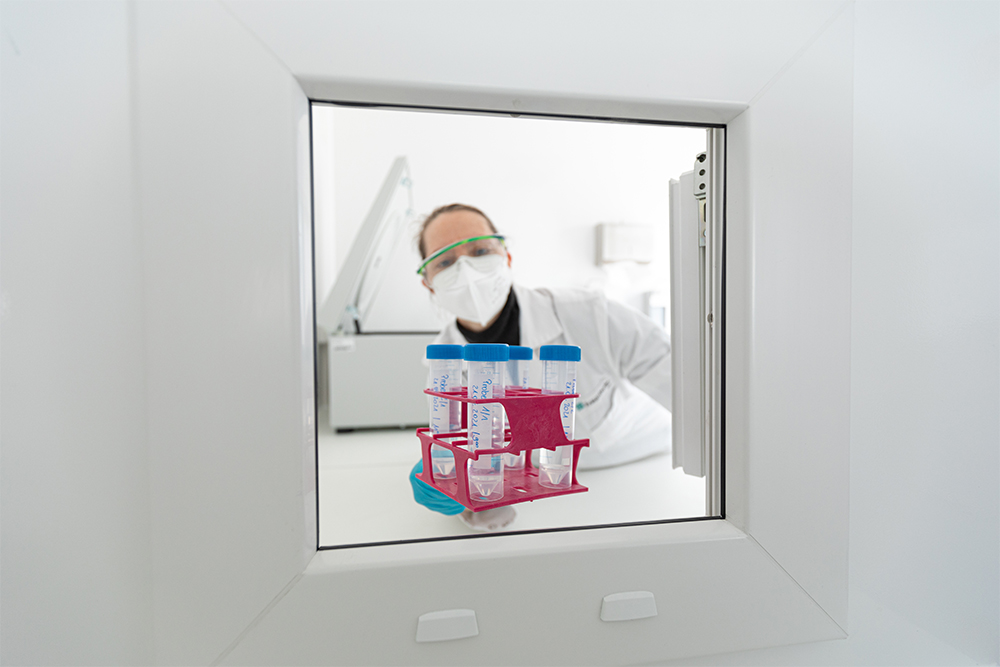
Mobile laboratory for efficient localization of corona hotspots

In short
The aim of the anti-corona project "Dikksi Co Vi - Diagnostics of contamination-critical samples for the reliable identification of corona viruses in wastewater" is to develop and implement a mobile, geographically rapidly relocatable laboratory unit for the detection of SARS-CoV-2 virus particle fragments in wastewater.
In detail
In order to prevent the further spread of the Corona pandemic and to be able to take targeted preventive measures, politicians need precise knowledge about the geographical spread of the virus. The current strategy is to use information from individual testing of symptomatic and diagnosed infections as a basis for decision-making. However, due to limited testing capacity and inconsistent testing practices, further approaches are needed.
One approach that can be used to determine the spread of the virus on a regionally resolved basis with almost no time lag is the analysis of wastewater from sewage treatment plants. Applied on a broad scale, the data provide an objective basis and are also suitable as an early warning system.
As part of the anti-corona project "Dikksi Co Vi - Diagnostics of contamination-critical samples for reliable identification of corona viruses in wastewater", scientists from the Department of Ultraclean Technology and Micromanufacturing at Fraunhofer IPA develop a mobile laboratory unit to analyze wastewater for SARS-CoV-2. The prototype can be used to test equipment, optimize workflows, collect data and develop forecasting tools.
"Wastewater from about 10,000 residents converges at each sewage treatment plant. Since infected people excrete SARS-CoV-2 viruses 5-6 days before the first symptoms of the disease appear, we can detect them as fragments in the wastewater early on, before in individual nows he or she is infected. This saves several days and allows us to react more quickly to the infection situation," explains Guido Kreck, project manager for cleanliness technology at IPA.


